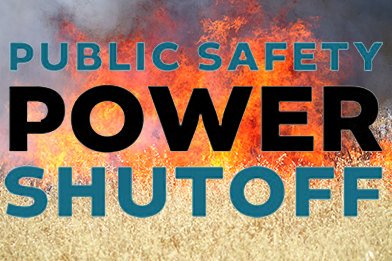
October 17, 2019 - SAN FRANCISCO, Calif. — During Pacific Gas and Electric Company's (PG&E) Public Safety Power Shutoff (PSPS) last week, wind gusts exceeded 40 mph in 22 counties and topped 50 mph in 15 counties.
The company considers many factors when deciding if a Public Safety Power Shutoff is needed to protect customers and communities, but an important element is how strong the winds will be.
"Our in-house meteorological team and experts from the National Weather Service and other federal agencies were in agreement that this event had the potential for strong winds and a heightened wildfire risk," said Scott Strenfel, PG&E's principal meteorologist. "And that's exactly what happened. The winds arrived and our system sustained considerable damage, yet no fires started as power lines were de-energized."
During the event, which impacted 738,000 customers, gusts of 77 mph were recorded in Sonoma County and 75 mph in Contra Costa County. So far, the company has confirmed 100-plus incidents of damage or hazards within the PSPS footprint. It is possible that these damages and hazards represented potential sources of wildfire ignition.
Prior to the event, PG&E's meteorologists and fire-weather experts participated in interagency calls with experts from multiple National Weather Service (NWS) offices and the Northern Operations Predictive Services. The experts were aligned that this was a very high fire risk event and had all the ingredients necessary for significant potential fires.
The National Weather Service issued multiple Red Flag Warnings that lasted from Wednesday afternoon until Friday morning that included locations where 2.1 million of PG&E's customers live. The Red Flag Warning encompassed a larger area than the PSPS footprint. Maximum wind gusts exceeded 40 mph in 22 counties impacted by the PSPS event:
- Sonoma County: 77 mph
- Contra Costa County: 75 mph
- Tehama County: 61 mph
- Sierra County: 59 mph
- Butte County: 56 mph
- Napa County: 54 mph
- Santa Cruz County: 54 mph
- Placer County: 53 mph
- Yolo County: 53 mph
- Solano County: 53 mph
- Humboldt County: 52 mph
- Kern County: 51 mph
- Lake County: 51 mph
- Mendocino County: 51 mph
- Santa Barbara County: 50 mph
- Shasta County: 49 mph
- Calaveras County: 49 mph
- Alameda County: 48 mph
- Colusa County: 47 mph
- El Dorado County: 46 mph
- San Luis Obispo County: 46 mph
- Marin County: 40 mph
In his "Weather and Climate Blog," Cliff Mass, an atmospheric sciences professor at the University of Washington who specializes in weather prediction and modeling, analyzed the weather conditions during the PSPS and talked about the value of "increasingly skillful weather forecasts."
Quoted on sfgate.com, Craig Clements, director of the Fire Weather Research Laboratory at San Jose State said: "Nailing that [a wind event] with a weather forecast model is very difficult. I still think it's prudent to turn off the power. It's what we need to do."
In conjunction with PG&E's meteorological team, the company's Wildfire Safety Operations Center team monitors conditions across our system and evaluates whether to proactively turn off electric power lines, in the interest of public safety, if heightened fire danger conditions are forecasted.
Each situation is unique, and no single factor drives a Public Safety Power Shutoff. PG&E carefully reviews a combination of many criteria when determining if power should be turned off for safety. These factors generally include, but are not limited to:
- A Red Flag Warning declared by the National Weather Service
- Low humidity levels, generally 20 percent and below
- Forecasted sustained winds generally above 25 mph and wind gusts in excess of approximately 45 mph, depending on location and site-specific conditions such as temperature, terrain and local climate
- Condition of dry fuel on the ground and live vegetation (moisture content)
- On-the-ground, real-time observations from PG&E's Wildfire Safety Operations Center and observations from PG&E field crews.
It is very possible that customers were affected by a power shutoff even though they were not experiencing severe weather conditions in their specific location. That's because the electric system relies on power lines working together to provide electricity across regions, counties and cities.
PG&E's weather website, www.pge.com/weather, offers insight into the seven-day-ahead forecast for a potential PSPS. The site includes live feeds from nearly 600 weather stations and approximately 100 high-definition cameras.
About PG&E
Pacific Gas and Electric Company, a subsidiary of PG&E Corporation (NYSE:PCG), is one of the largest combined natural gas and electric energy companies in the United States. Based in San Francisco, with more than 20,000 employees, the company delivers some of the nation's cleanest energy to 16 million people in Northern and Central California. For more information, visit www.pge.com and www.pge.com/news.
Source: PG&E








